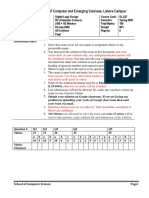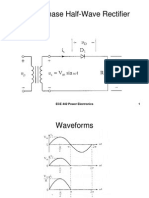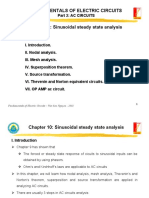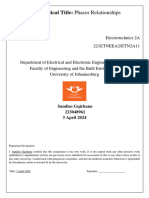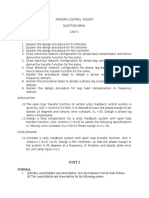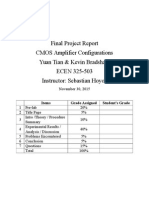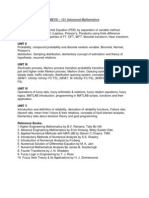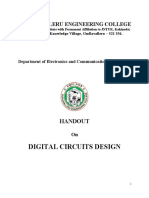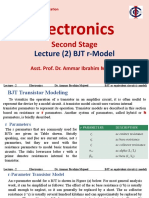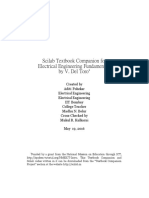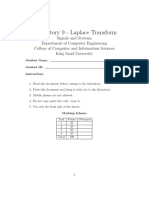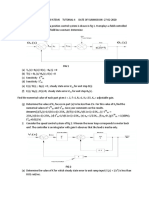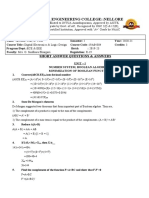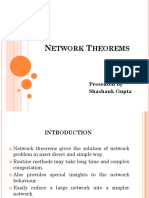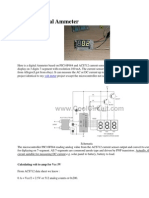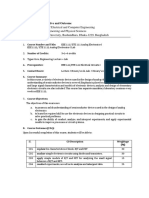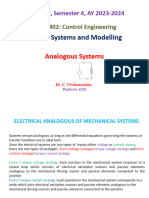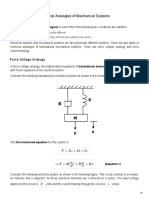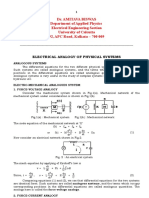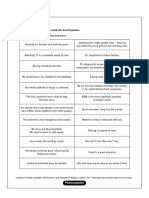0% found this document useful (0 votes)
325 views19 pagesAnalogous System
The document compares and contrasts mechanical systems and electrical systems using analogy. It shows that:
1) Mechanical systems of mass, stiffness, and damping can be modeled as analogous electrical circuits using components like inductors, capacitors, and resistors.
2) Translational mechanical systems map to either force-voltage or force-current analogies in electrical domains. Rotational mechanical systems map to either torque-voltage or torque-current analogies.
3) Analogous electrical components represent mechanical properties - inductance replaces mass, capacitance replaces stiffness, and resistance replaces damping.
Uploaded by
Amit GoriyanCopyright
© © All Rights Reserved
We take content rights seriously. If you suspect this is your content, claim it here.
Available Formats
Download as PDF, TXT or read online on Scribd
0% found this document useful (0 votes)
325 views19 pagesAnalogous System
The document compares and contrasts mechanical systems and electrical systems using analogy. It shows that:
1) Mechanical systems of mass, stiffness, and damping can be modeled as analogous electrical circuits using components like inductors, capacitors, and resistors.
2) Translational mechanical systems map to either force-voltage or force-current analogies in electrical domains. Rotational mechanical systems map to either torque-voltage or torque-current analogies.
3) Analogous electrical components represent mechanical properties - inductance replaces mass, capacitance replaces stiffness, and resistance replaces damping.
Uploaded by
Amit GoriyanCopyright
© © All Rights Reserved
We take content rights seriously. If you suspect this is your content, claim it here.
Available Formats
Download as PDF, TXT or read online on Scribd
/ 19


